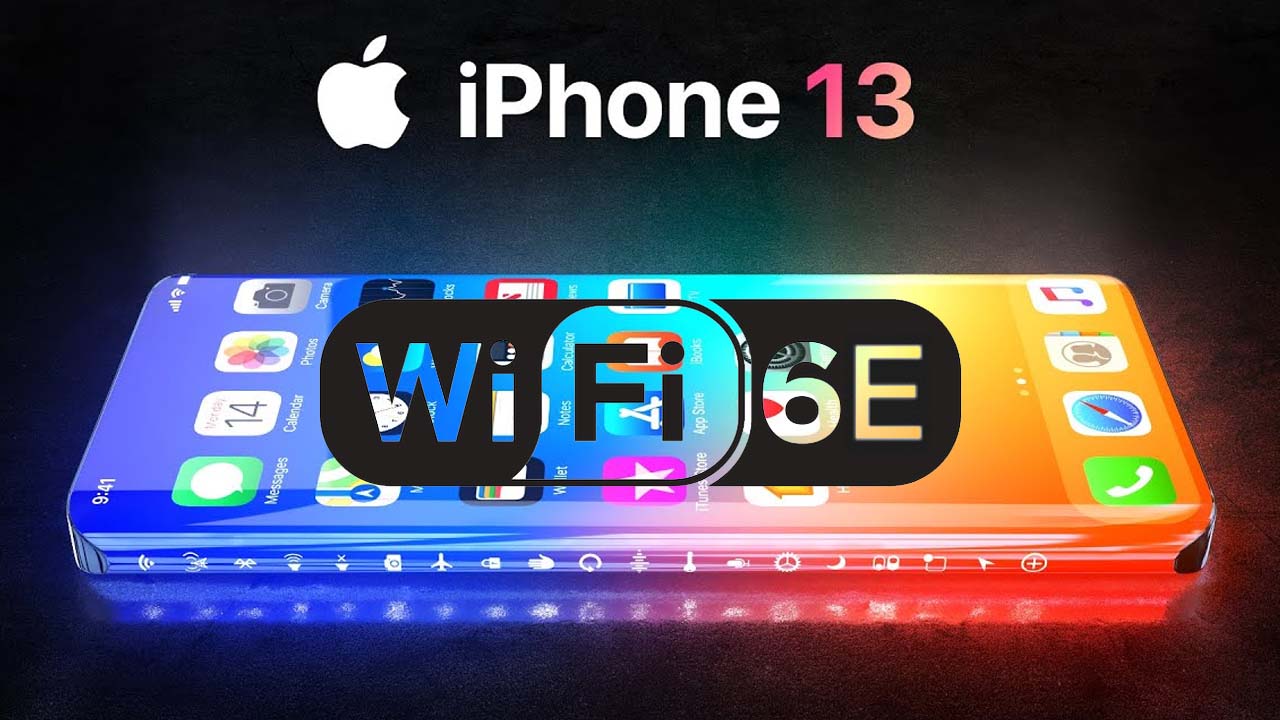Apple is expected to apply Wi-Fi 6E, an improved standard for Wi-Fi 6, starting with the iPhone 13 series. This is a forecast from an analyst at the financial services firm Barclays. Let's take a look at why this move is so important and how the use of Apple devices in companies will change.
The news about this new specification doesn't seem so important, given that most Apple users don't use Wi-Fi 6 routers at home and at work because of cost. In particular, it sounds like an idle story that the Wi-Fi Alliance is starting to certify Wi-Fi 6E devices amid the unfortunate period of a pandemic.
However, Wi-Fi 6E is an issue worth paying attention to. The biggest feature of Wi-Fi 6E is that it extends all the features of Wi-Fi 6 to the 6GHz band. Those interested in network allocation will know that this band has only recently been newly opened for public use in some countries, including the United States, United Kingdom, Europe, Chile, South Korea, and the UAE. This means that traffic in this band is still very valuable and has the following advantages.
- Greater availability
- Less competition and interference
- Faster wifi speed
- Full support for WiFi 6
According to the Wi-Fi Alliance, Wi-Fi 6 is a standard designed to improve performance in congested spaces. Network performance can be improved when using Wi-Fi at the home, office, public places, or conference venues such as WWDC in an environment that overlaps with several surrounding networks. In addition to offering more bandwidth, this standard better responds to the demands of both video streaming and IoT applications. That's why Wi-Fi 6 is already widely used in education and healthcare. This standard has the following characteristics.
- Gigabit Wi-Fi speeds up to 5.3Gbps
- Up to 4x performance improvement in dense and chaotic environments
- Up to 40% data transfer speed improvement on a single client device
- 4x increase in network efficiency
- Supports up to 50 or more devices
- Increased battery life on client devices like iPhones
- Speed up 2.4GHz network
In addition to these advantages, Wi-Fi 6E additionally supports 6GHz. According to the Wi-Fi Alliance, Wi-Fi 6E can use 14 additional 80MHz channels or super-wide 160MHz channels. It is suitable for applications such as high-resolution video streaming or virtual reality within 6GHz. Wi-Fi 6E devices use this wider channel and additional capacity to provide stronger network performance and support more Wi-Fi users at once, even in denser and congested environments.
The Wi-Fi Alliance said, "Wi-Fi 6E is a remarkable technological breakthrough in the Wi-Fi space, creating new use cases such as unified communications, cloud computing, and telepresence, and accelerating next-generation connectivity with 5G networks."
When Apple introduced the iPhone 11, the most significant improvement was Wi-Fi 6 support. Currently, it is supported on all Apple Silicon Macs, iPads, and iPhones. But even if these devices support it, it's useless if you don't connect to a Wi-Fi 6 network. In other words, you need to upgrade or replace your router to benefit from Wi-Fi 6.
Wi-Fi 6 is still an important complement to other network access and is sure to become more and more widely used. Business users, in particular, have good reasons to switch to Wi-Fi 6E. The more devices connected to the network in the enterprise, the more powerful networks are required to support these devices and systems. That's exactly what Wi-Fi 6 or 6E offers. Therefore, it is important to see Wi-Fi 6 as a supplement that improves not only the existing network but also 5G.
Some experts predict that Wi-Fi 6E will spread rapidly. Phil Solis, research director at IDC, predicts that there will be 338 million devices supporting Wi-Fi 6E by 2022. In addition, devices that support 6GHz are expected to reach 20% of Wi-Fi 6 devices. These devices will provide a new user or corporate experience. Solis said, "It is expected that several companies will release a new Wi-Fi 6E chipset this year. Also, in the first quarter of this year, various new Wi-Fi 6E smartphones, PCs, and laptops will appear, followed by TV and VR products.
Enterprises and general users of Apple devices can expect even greater advantages. The iPhone, as well as other Apple devices, will support both. In this way, IoT can be supported more efficiently and content can be delivered faster.






0 Comments